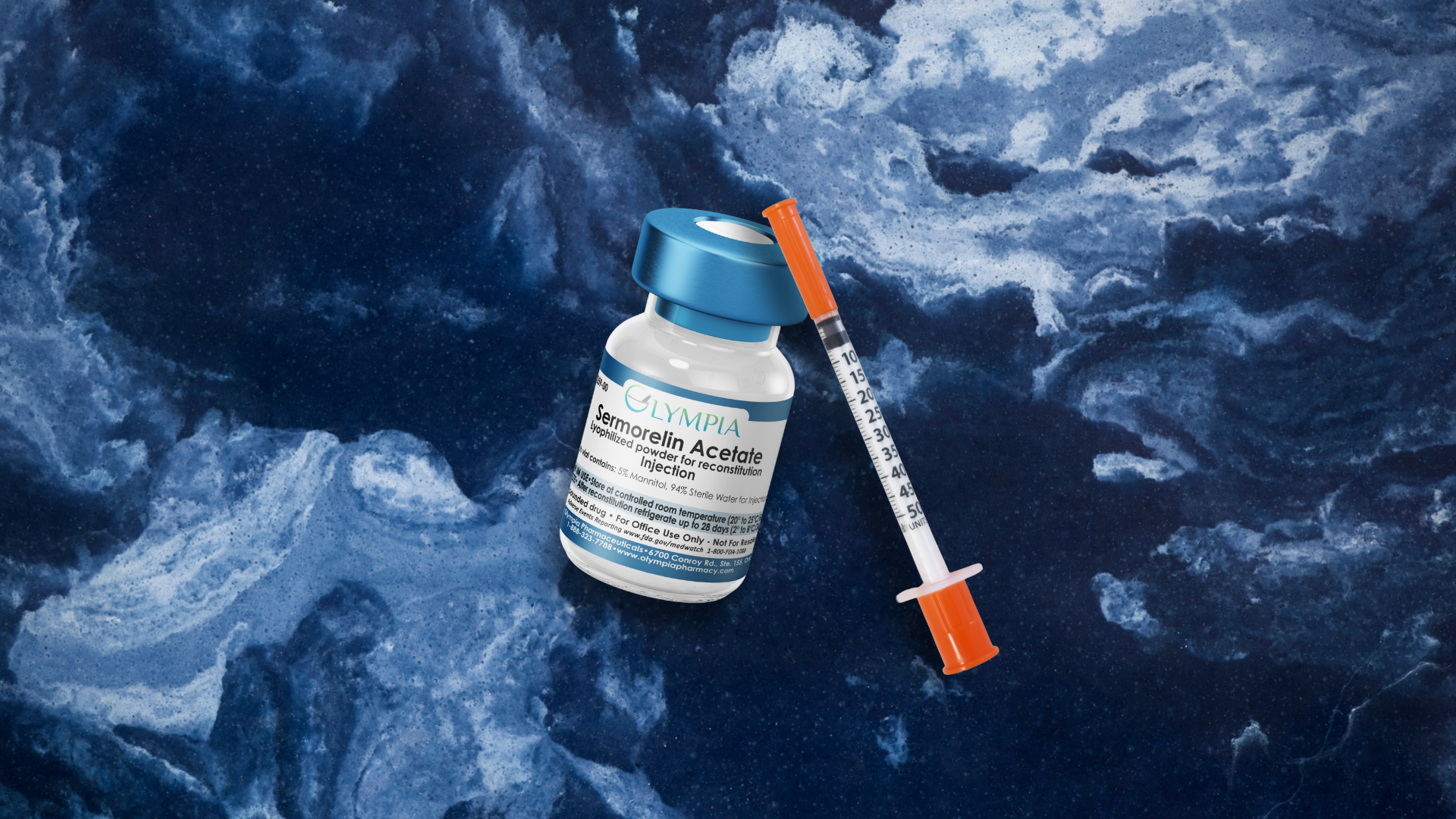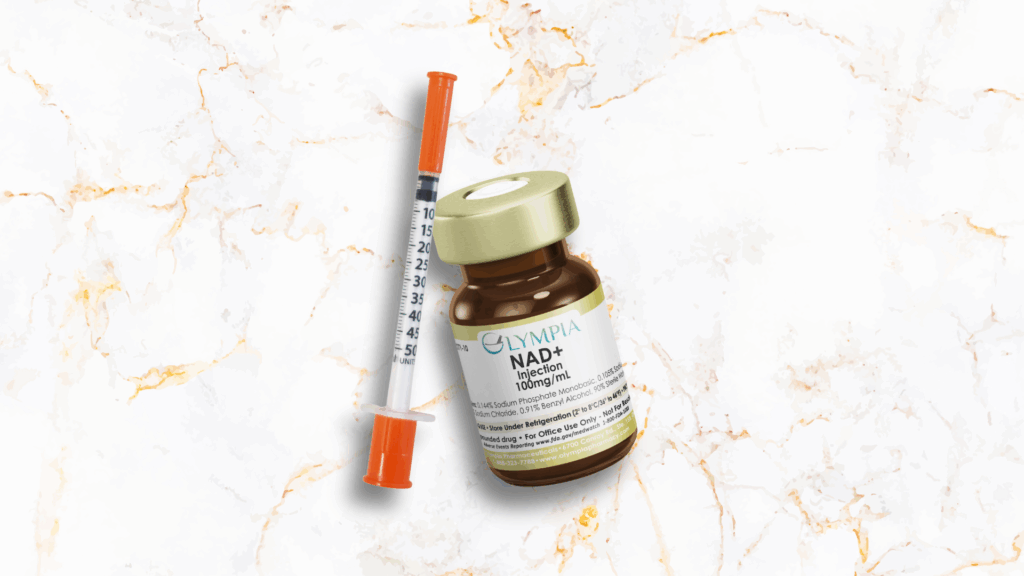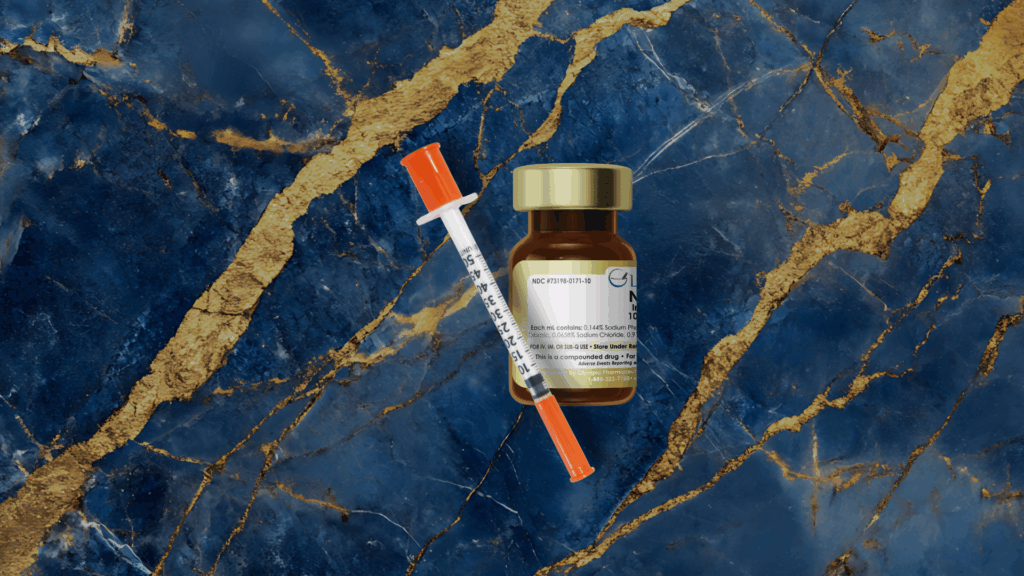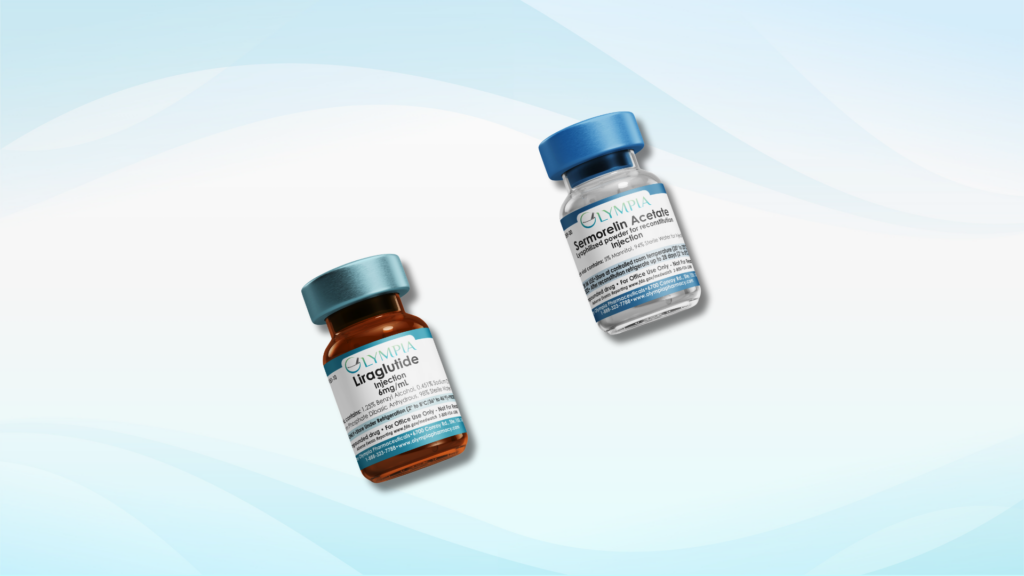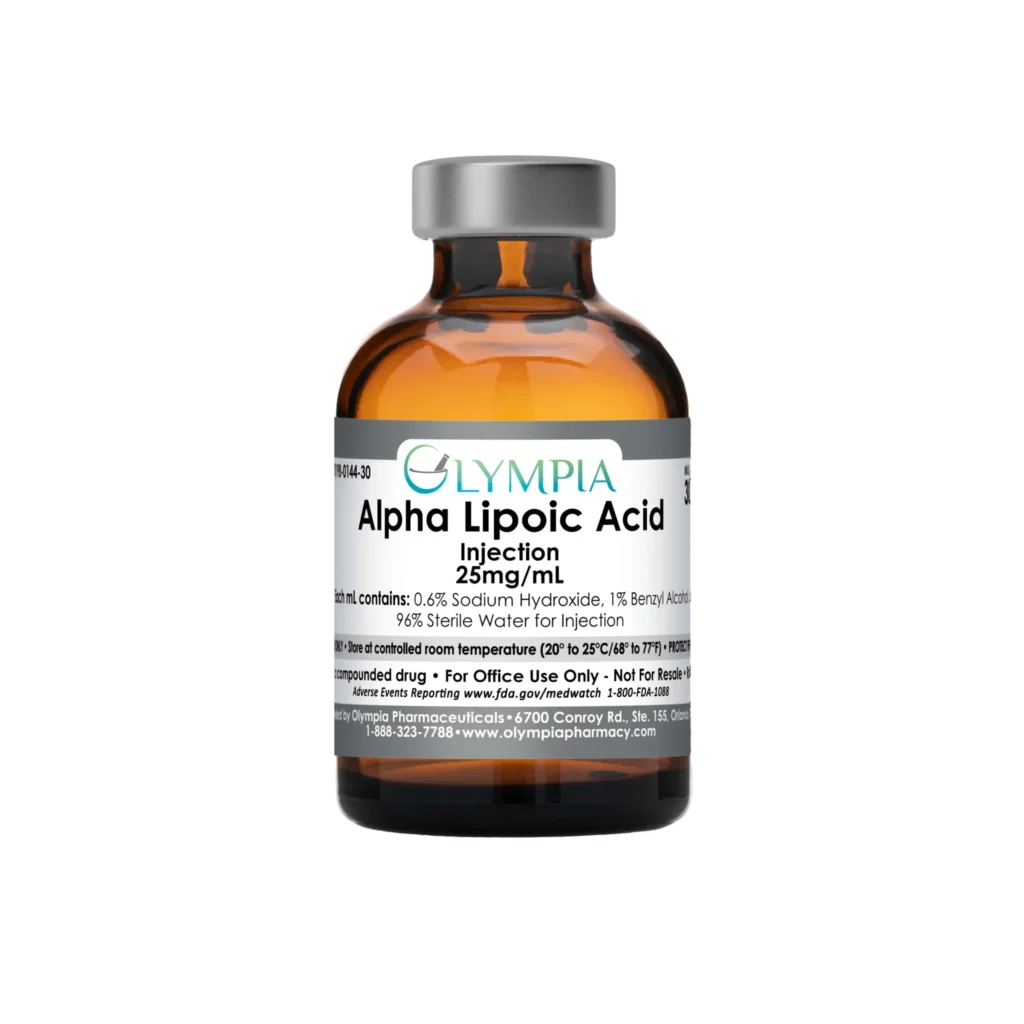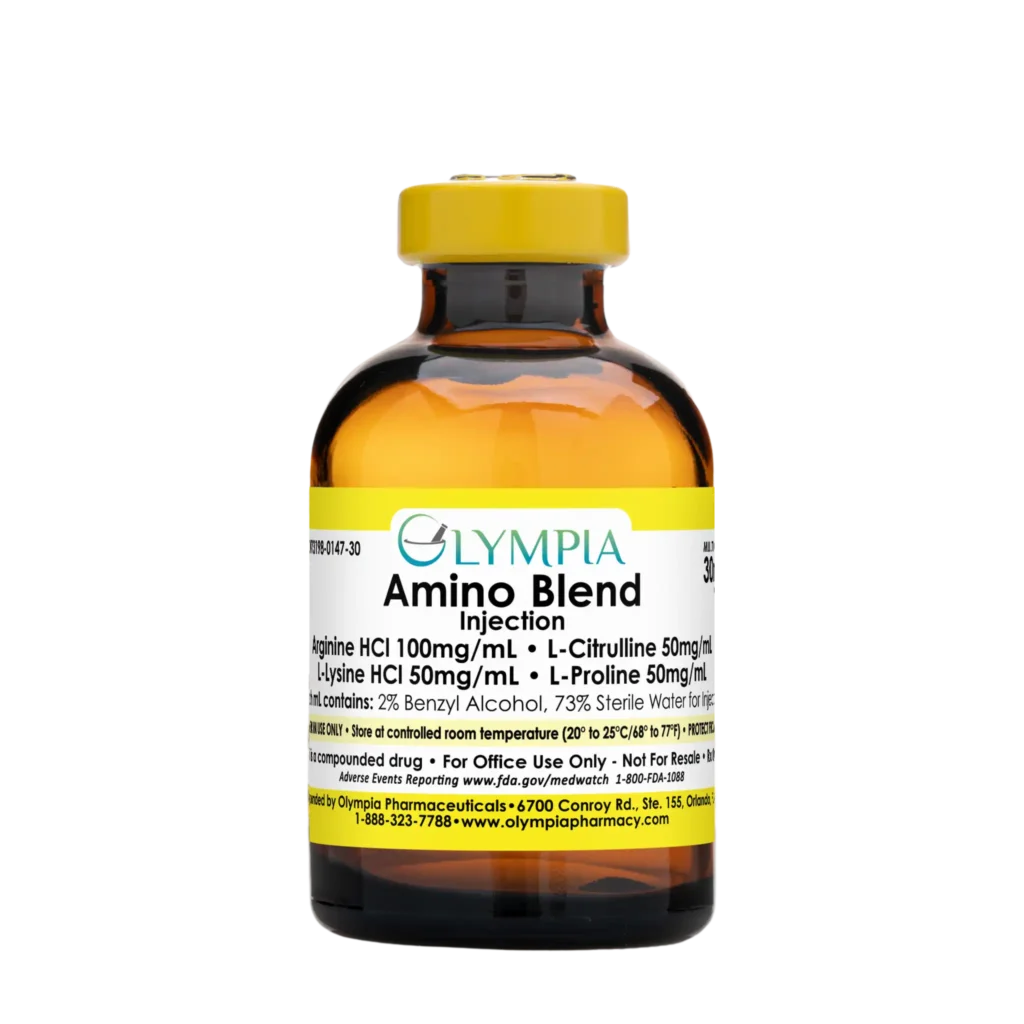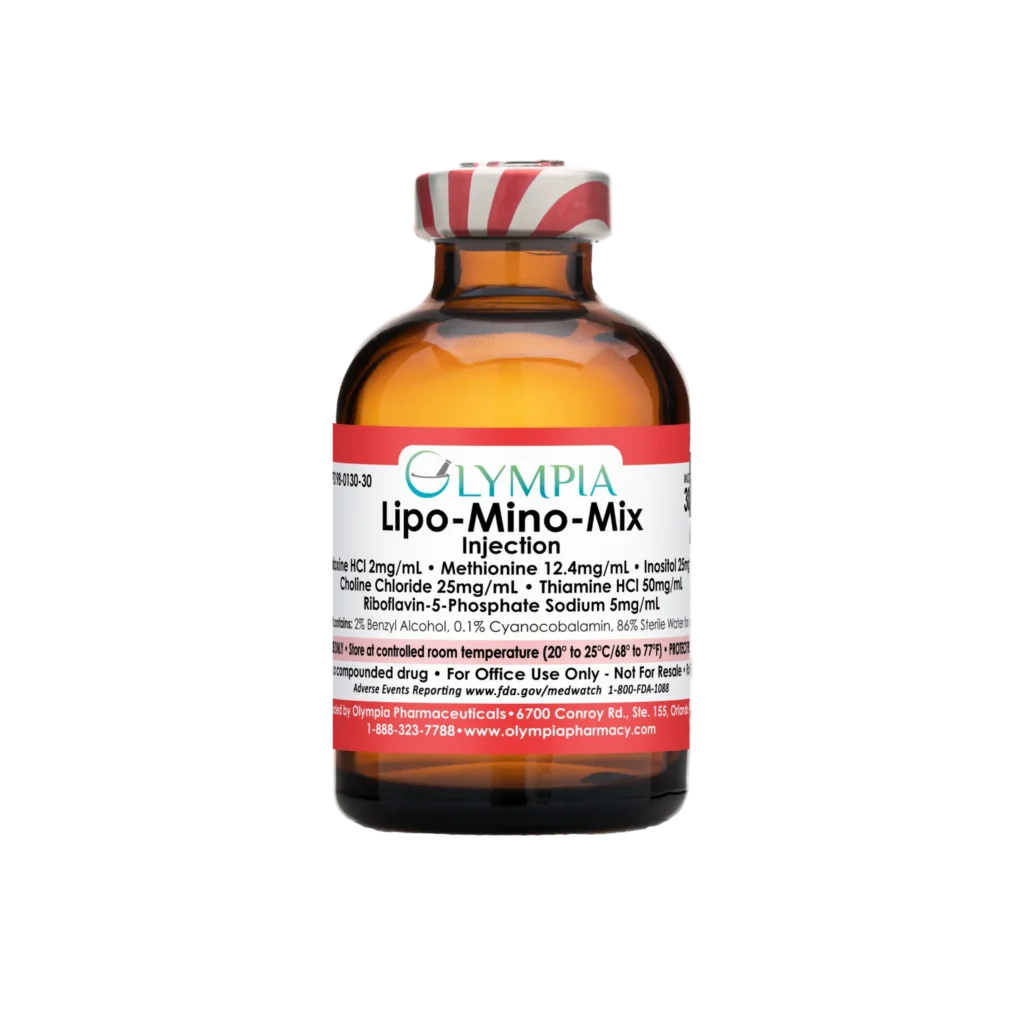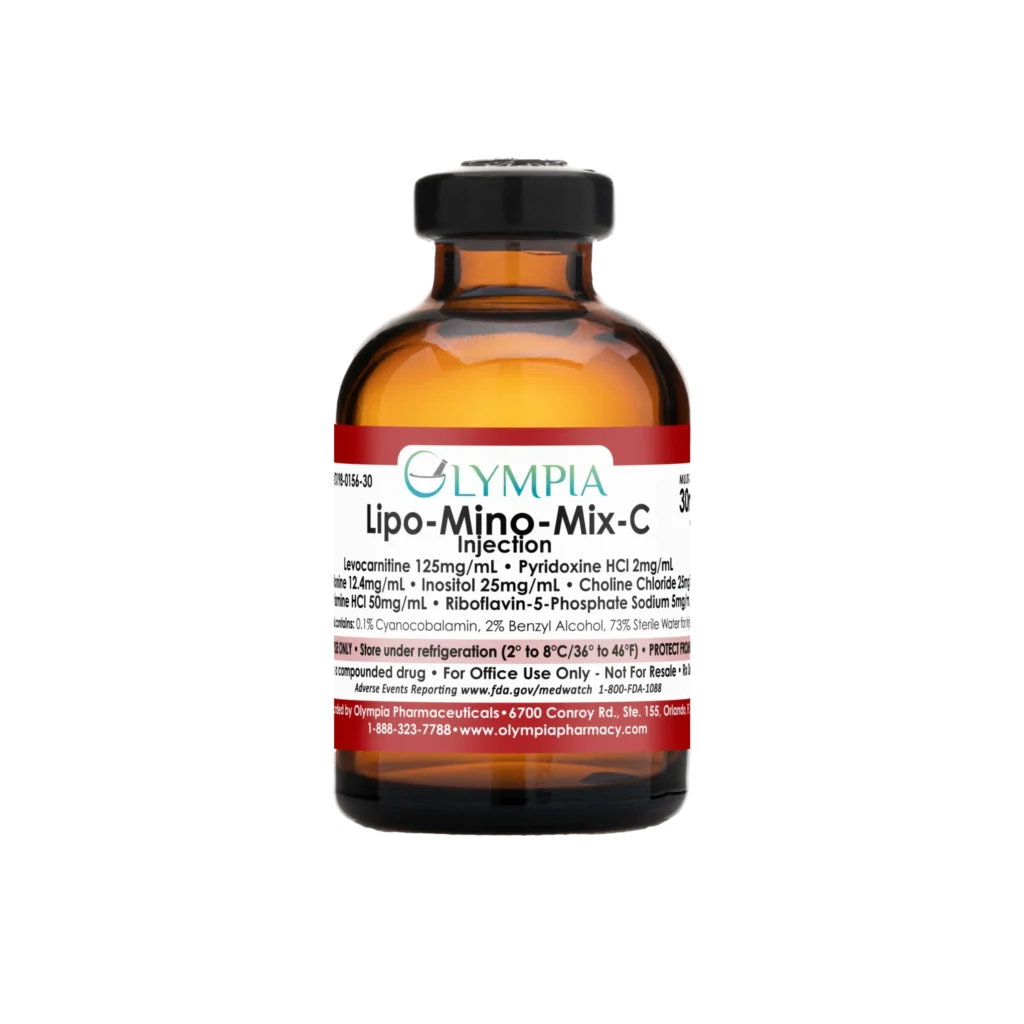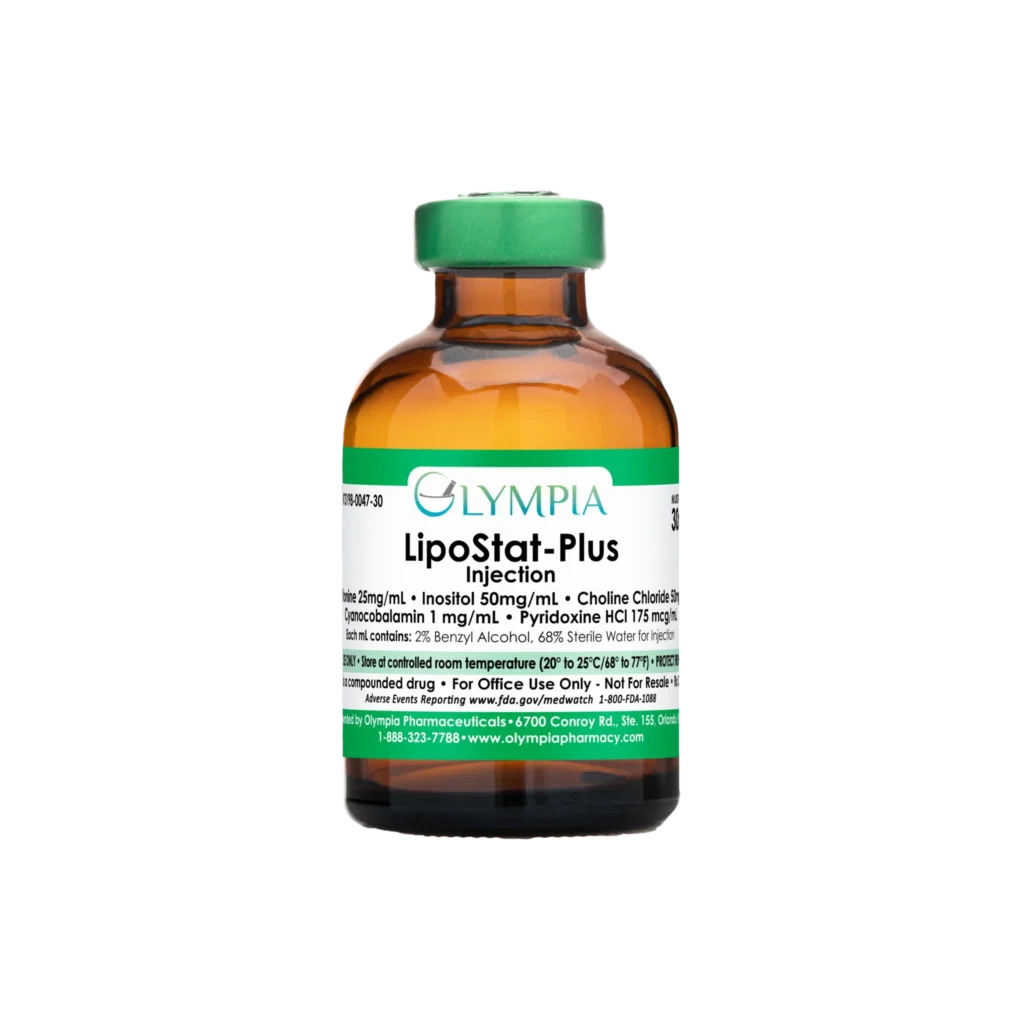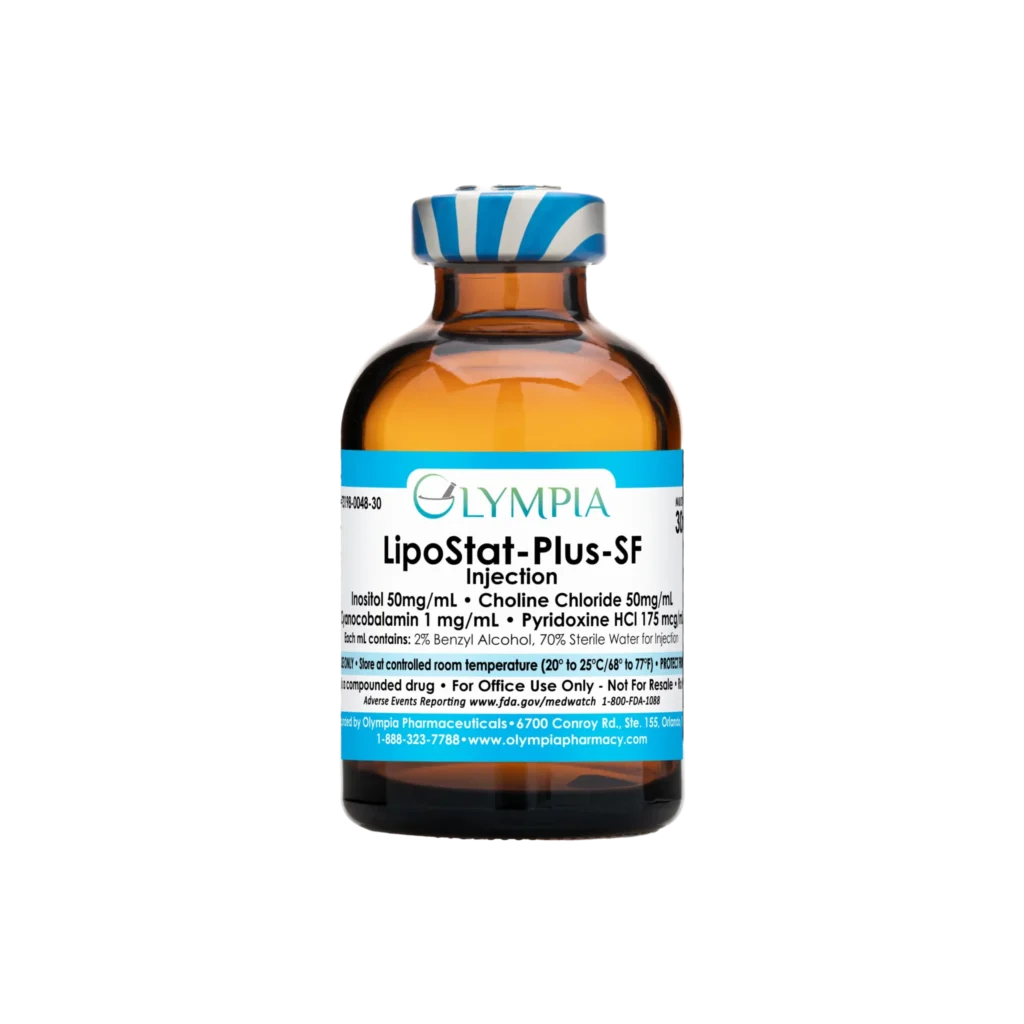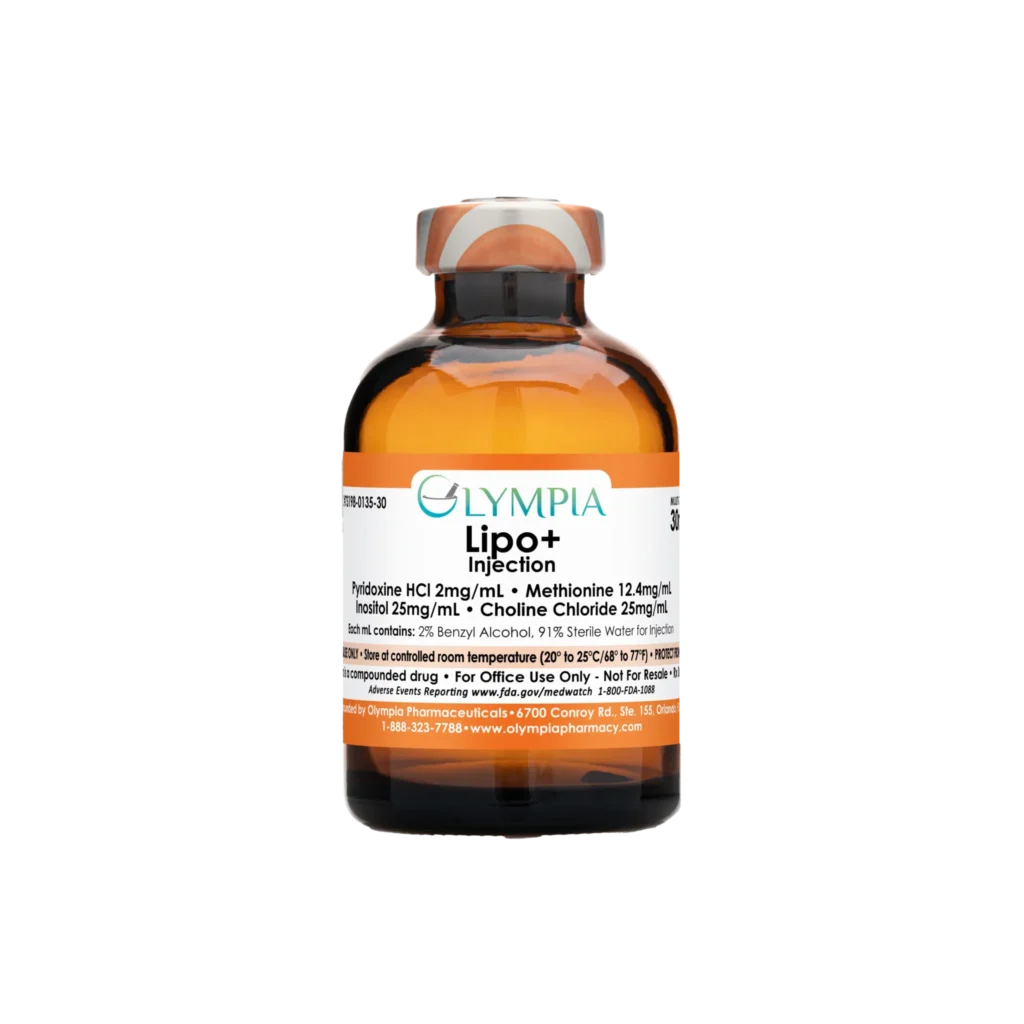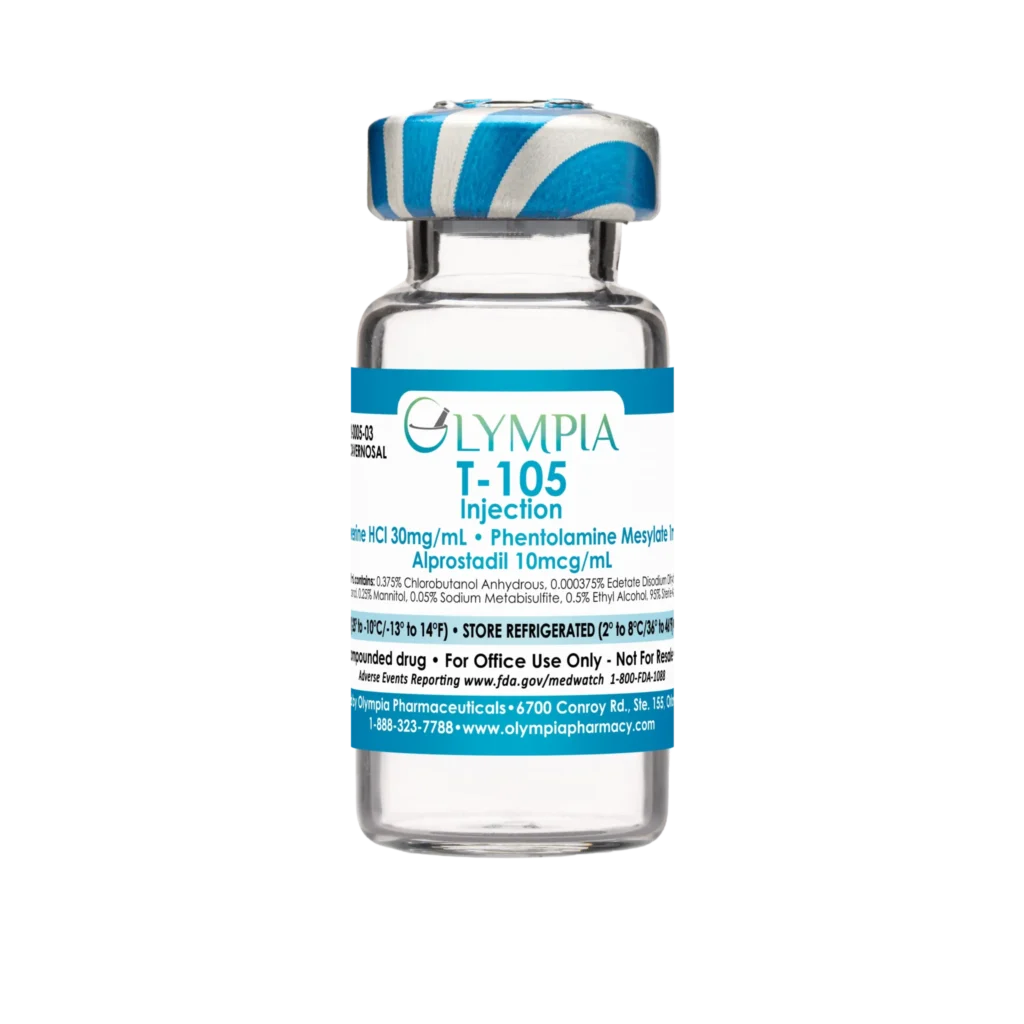If you’re strength‑training, building endurance, or simply upgrading your recovery routine, you’ve probably heard of Sermorelin Acetate. This peptide is a standout player in our Weight Management line of products. Below, we break down what exactly sermorelin is, why some fitness-forward adults are discussing it with their clinicians, and how it’s commonly implemented inside a supervised protocol.
What is Sermorelin Acetate?
Sermorelin Acetate is a compounded peptide, and an injectable form of the growth hormone-releasing hormone (GHRH). It signals the pituitary gland to release your body’s own growth hormone via the GHRH receptor. That makes it a tool clinicians may consider when aiming to work with existing physiology.
How it works in the body
Growth hormone is released in pulses, with a prominent burst shortly after the patient falls asleep; this rhythm is shaped by GHRH and somatostatin activity in the brain.
Where it fits among peptides and hormones
Sermorelin acts upstream – at the level of pituitary signaling – rather than delivering exogenous growth hormone. Under a clinician’s direction, it can be administered via subcutaneous (SubQ) injection.
Why active adults consider Sermorelin
The possible benefits that may align with fitness goals when used under clinical oversight include:
- Support for body composition via sugar and fat metabolism,
- Assistance with athletic performance,
- Stimulating growth hormone release to facilitate muscle growth, and
- Improved sleep quality and skin elasticity.
These points track with broader physiology: Growth hormone secretion peaks during early‑night, slow‑wave sleep, and resistance exercise can raise growth hormone – both in line with recovery and training adaptations. Aligning a program with these adaptations is a common, practical step.
Implementing Sermorelin within a fitness protocol
Clinician‑directed only: Dosing, schedule, and duration will vary from patient to patient. Always follow the plan set by your licensed provider.
A typical clinician workflow
- Intake & goal‑setting: Clarify priorities (e.g., lean mass, recovery, energy, sleep consistency).
- Plan design: Your provider determines whether Sermorelin belongs in your program and how it fits with training days, rest days, and sleep.
- Check‑ins & adjustments: Track markers like strength performance, RPE, body‑composition trend, sleep quality, and readiness; refine training and recovery blocks accordingly.
Timing with training days and sleep
- Sleep alignment: Because one of the largest GH pulses occurs soon after sleep onset, some clinicians discuss aligning sermorelin with bedtime routines and prioritizing sleep. This can mean having a consistent “lights-out” time, ensuring your room is cooler/darker in preparation for sleep, and developing a strong mental association between your bed and sleep.
- Training synergy: Programs with moderate‑to‑high volume, large muscle‑mass involvement, and shorter rests tend to elicit larger GH responses – one reason coaches coordinate phases of hypertrophy or mixed‑modal work alongside recovery‑oriented peptide plans. Your coach and clinician should supervise any changes.
Nutrition, recovery, and tracking
- Nourish for adaptation: Adequate protein and total calories are essential to support training response.
- Glucose awareness (per clinician guidance): Glucose loads can acutely suppress GH in humans; your provider may counsel you to avoid heavy carbohydrate intake near administration times if appropriate for your plan.
- Track what matters:
- Training: loads, reps, total volume, and rate of perceived exertion (RPE).
- Body composition: trend over time (avoid chasing daily fluctuations).
- Recovery: sleep duration/quality and next‑day readiness.
Stacking with NAD+ (when prescribed)
Olympia offers an NAD+ & Sermorelin bundle designed with longevity and fitness routines in mind. Emphasizing cellular support with NAD+ alongside Sermorelin’s potential to assist body composition and training outcomes, this bundle may aid with mitochondrial efficiency, DNA repair, energy levels, and sleep quality. Always discuss with a medical provider to ensure a pairing like the NAD+ & Sermorelin bundle fits your goals and medical profile.
Storage & handling (patients and clinics)
For Sermorelin supplied by Olympia:
- Lyophilized (dry) form: store at a controlled room temperature.
- After reconstitution: refrigerate; do not freeze.
- Always follow the storage label that accompanies your specific prescription.
Other considerations
- Sermorelin use is clinician‑directed.
- Your provider will determine the dose, route, and duration, and how it will mesh with your training, nutrition, and sleep routines.
- If you compete in a sport, consult your governing body’s rules before starting any new medical therapy.
Frequently Asked Questions
Is Sermorelin the same as growth hormone?
No. Sermorelin signals your pituitary to release GH; it does not replace GH directly.
Why do coaches and clinicians care about sleep with Sermorelin?
Because GH pulses are strongly linked to early‑night, slow‑wave sleep. Getting sleep right helps align the protocol with natural physiology.
What’s the route of administration?
Olympia’s compounded Sermorelin can be administered subcutaneously. Your medical provider will assess the best route for your needs.
Can the way I train affect how my body responds?
Yes. Volume, muscle mass involved, and rest intervals influence hormonal responses to resistance training. Your programming should reflect your phase and recovery bandwidth.
Important: This article is for informational purposes only and not intended nor written to substitute medical advice. Always consult with a medical professional before beginning any form of treatment.
